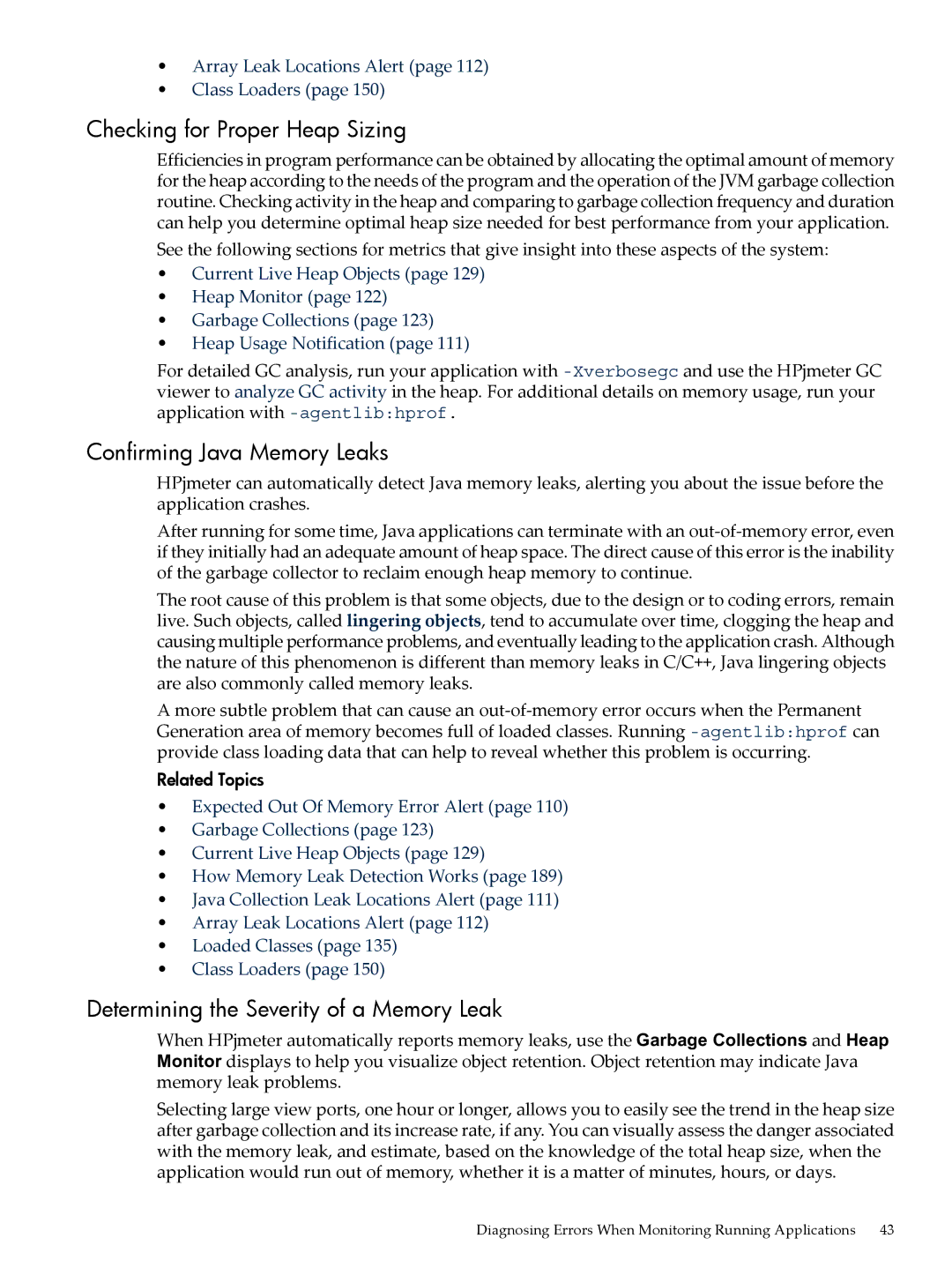•Array Leak Locations Alert (page 112)
•Class Loaders (page 150)
Checking for Proper Heap Sizing
Efficiencies in program performance can be obtained by allocating the optimal amount of memory for the heap according to the needs of the program and the operation of the JVM garbage collection routine. Checking activity in the heap and comparing to garbage collection frequency and duration can help you determine optimal heap size needed for best performance from your application.
See the following sections for metrics that give insight into these aspects of the system:
•Current Live Heap Objects (page 129)
•Heap Monitor (page 122)
•Garbage Collections (page 123)
•Heap Usage Notification (page 111)
For detailed GC analysis, run your application with
Confirming Java Memory Leaks
HPjmeter can automatically detect Java memory leaks, alerting you about the issue before the application crashes.
After running for some time, Java applications can terminate with an
The root cause of this problem is that some objects, due to the design or to coding errors, remain live. Such objects, called lingering objects, tend to accumulate over time, clogging the heap and causing multiple performance problems, and eventually leading to the application crash. Although the nature of this phenomenon is different than memory leaks in C/C++, Java lingering objects are also commonly called memory leaks.
A more subtle problem that can cause an
Related Topics
•Expected Out Of Memory Error Alert (page 110)
•Garbage Collections (page 123)
•Current Live Heap Objects (page 129)
•How Memory Leak Detection Works (page 189)
•Java Collection Leak Locations Alert (page 111)
•Array Leak Locations Alert (page 112)
•Loaded Classes (page 135)
•Class Loaders (page 150)
Determining the Severity of a Memory Leak
When HPjmeter automatically reports memory leaks, use the Garbage Collections and Heap Monitor displays to help you visualize object retention. Object retention may indicate Java memory leak problems.
Selecting large view ports, one hour or longer, allows you to easily see the trend in the heap size after garbage collection and its increase rate, if any. You can visually assess the danger associated with the memory leak, and estimate, based on the knowledge of the total heap size, when the application would run out of memory, whether it is a matter of minutes, hours, or days.
Diagnosing Errors When Monitoring Running Applications | 43 |
